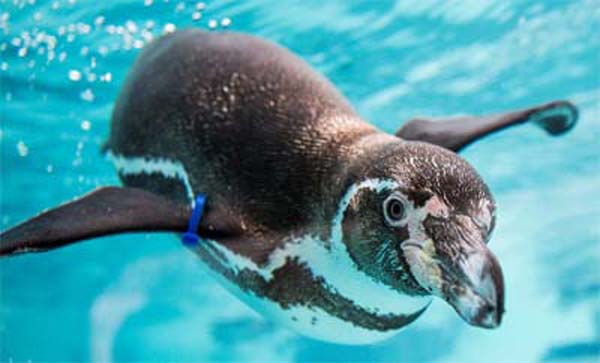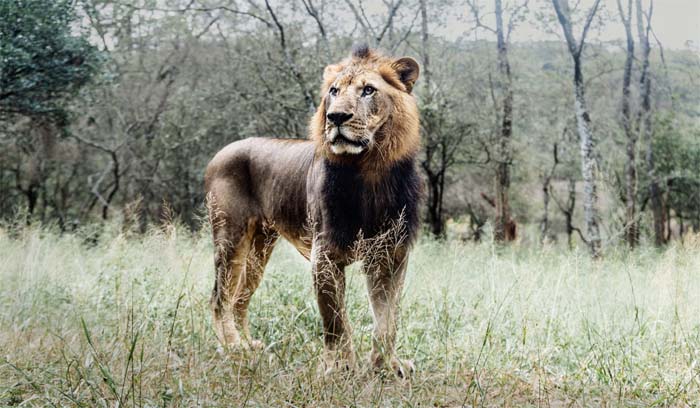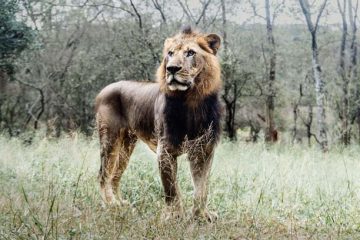Earth Desk : dhakamirror.com Nearly 100 pilot whales stranded on a beach in Western Australia on Tuesday. Australian officials said 51 pilot whales had died as of Wednesday. The 51 long-finned pilot whales were part of a pod of almost 100 spotted off Cheynes Beach near Albany, about 400km south-east of Perth on Tuesday. Experts ... Read more
Earth
Humble Humboldt penguins, the excellent swimmers
News Desk : dhakamirror.com Originally from South America, the Humboldt penguin lives on the coasts of Peru and Chile. Its closest relatives are the African penguin, the Magellanic penguin and the Galpagos penguin. Humboldt penguins are extremely sociable, inquisitive and communicative birds, some would even say they are the friendliest of them all. These birds ... Read more
Six more lions speared to death by Kenyan herders
News Desk : dhakamirror.com Six lions have been killed by herders in a national park in southern Kenya, in a blow to conservation efforts and the tourism industry which is a key pillar of the nation’s economy. The killings, which took place close to the Amboseli National Park, came just days after a wild lion, ... Read more
Wild lion Loonkiito, ‘one of the world’s oldest’, killed by humans in Kenya
News Desk : dhakamirror.com A wild male lion believed to be one of the world’s oldest has died after being speared by herders, authorities in Kenya have said. The 19-year-old lion had lived in Amboseli National Park, Kenya, but died when he went alone to a nearby village in search of food and attacked livestock. ... Read more
Tiger populations are expected to increase
News Desk : dhakamirror.com The number of tigers in the Sundarbans is expected to increase due to successful conservation efforts in the world’s largest mangrove forest, officials said. Forest Department officials involved in the ongoing tiger census said they found evidence of tigers using camera traps in areas where a previous investigation found none. According ... Read more
Gazipur Safari Park welcomes a newborn zebra
News Desk : dhakamirror.com A zebra foal was born at Bangabandhu Sheikh Mujib Safari Park in Gazipur in the middle of the month. With the latest one, the number of the Zebra stands at 26, our Gazipur correspondent reports quoting the park’s in-charge Assistant Conservator of Forest Rafiqul Islam. However, the sex of the baby ... Read more
Egypt finds 2,000 mummified ram heads in an ancient temple
Mummified ram heads found in Ramses II Temple in ancient city of Abydos News Desk : dhakamirror.com An American archaeological mission has unearthed over 2,000 mummified ram heads, at the temple of Ramses II in the ancient city of Abydos in southern Egypt. In addition to this remarkable find, the team also uncovered a much ... Read more
Giant sunfish spotted last year believed to be world’s largest bony fish
Fishermen and boaters saw the huge creature floating near the Azores islands last December News Desk: dhakamirror.com In last December, Portuguese scientists learned that fishermen and boaters noticed a dead sunfish in the central North Atlantic. When researchers saw the carcass near Faial Island in the Azores, they nearly couldn’t believe it. Scientists say the ... Read more
Excavated 1.4M-year-old bones in northern Spain have the potential to alter human prehistory
News Desk : dhakamirror.com The oldest human fossils ever discovered on the European continent are 1.4-million-year-old facial bones, which could change the course of human prehistory, according to the researchers involved in the historic discovery. Speaking to Anadolu Agency, Aurora Martin, the archaeologist and general coordinator of the Museum of Human Evolution in Burgos, said: ... Read more
Amazing Planet: Elephants can hear with their feet and understand different languages
Beatrice Christofaro Elephants are skilled communicators with memories that could give humans a run for their money. But culling and habitat loss is making it harder for them to pass on this expertise. They’re known as gentle giants. Elephants, found across Africa and Asia, are the largest mammals on land. And their massive bodies — ... Read more
Tigers in the Sundarbans survive hardship
News Desk : dhakamirror.com Tigers in the Sundarbans are in imminent danger of being hungry due to the rising spotted deer poaching. The big cats, well-known as the Royal Bengal Tiger in the southern mangrove forest of the country hunt spotted deer, monkey, and wild boar. According to a review study by the Implementation, Monitoring ... Read more
No country for elephants
Mostafa Yousuf As if it wasn’t hard enough for elephants to survive in this country, in a tragic development, it was discovered that they are not just dying by electrocution. Shooting down the animals straight up has become seemingly rampant to protect encroached forest lands. In Cox’s Bazar, 18 elephants were shot down in the ... Read more
Snakes help monitor Fukushima Fallout
Researchers have equipped snakes with tracking devices and dosimeters to measure the radiation levels in the vicinity of the Fukushima Dai-ichi nuclear power plant in Japan, in which there were three core meltdowns in March 2011 – one of the largest anthropogenic releases of radioactive contamination in history. Radiation leaks forced tens of thousands of people ... Read more
Cheetah the best sprinter on earth
The fastest cheetah on Earth has done it again, breaking her previous world record for the 100-meter dash and setting a new best time of 5.95 seconds. This feat surpasses the fastest of all human 100-meter sprinters by almost four seconds. Usain Bolt, a Jamaican sprinter now competing at the 2012 London Olympics, holds the ... Read more
Western black rhino declared extinct
No wild black rhinos remain in West Africa, according to the latest global assessment of threatened species, the Red List, drawn up by the International Union for Conservation of Nature (IUCN). The IUCN reports that despite conservation efforts, 25% of the world’s mammals are at risk of extinction. As part of its latest work it ... Read more
The Jurassic cheetah
Supercheetah The Jurassic cheetah Obaidur Rahman Paleontologist from Senckenberg Research Institute, Weimar, Germany, recently unearthed the remains of a cheetah which might just have been the bloodiest killers of the ancient times wandering at one of the oldest known habitat of human beings. It is well known that the only remaining species of cheetah, Acinonyx ... Read more
Unique pig-nosed turtle is over-harvested in New Guinea
Numbers of pig-nosed turtles have declined steeply over the past 30 years, researchers have discovered. The unique reptile has become an international conservation icon, due to it having no close relatives and being considered the turtle most adapted to life underwater in freshwater ponds and rivers. Yet demand for its eggs and meat in Papua ... Read more
‘Ants can identify their worst enemy’
A study of the ant species Temnothorax longispinosus has revealed that it can spot its worst enemy and react with appropriate aggression. The ant colonies are often invaded by slavemaker ants, which steal their pupae. So when the ants spot a slavemaker, they attempt to kill it by biting and stinging. But the insects do ... Read more
Birds eavesdrop on predator chipmunks
Ground-nesting birds eavesdrop on chipmunks in order to protect their nests, according to scientists. Ovenbirds and veeries live alongside egg-eating chipmunks in the Hudson Valley, New York, US. Researchers have found that when simulated chipmunk calls are played, the birds nest up to 20 metres further away. The study is the first to show that ... Read more
Wildlife in jeopardy
Hunger, death on offer as forests vanish fast The number of phone calls we receive every day is amazing. People call to say fishing cats have been killed or captured. Jungle cat kittens found. Vultures lying sick. And of course, tigers have been killed. If we put together all these pieces of information, we get ... Read more






